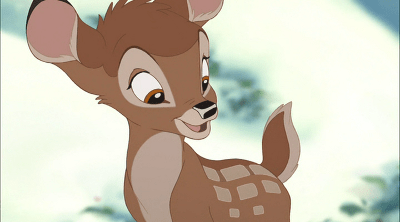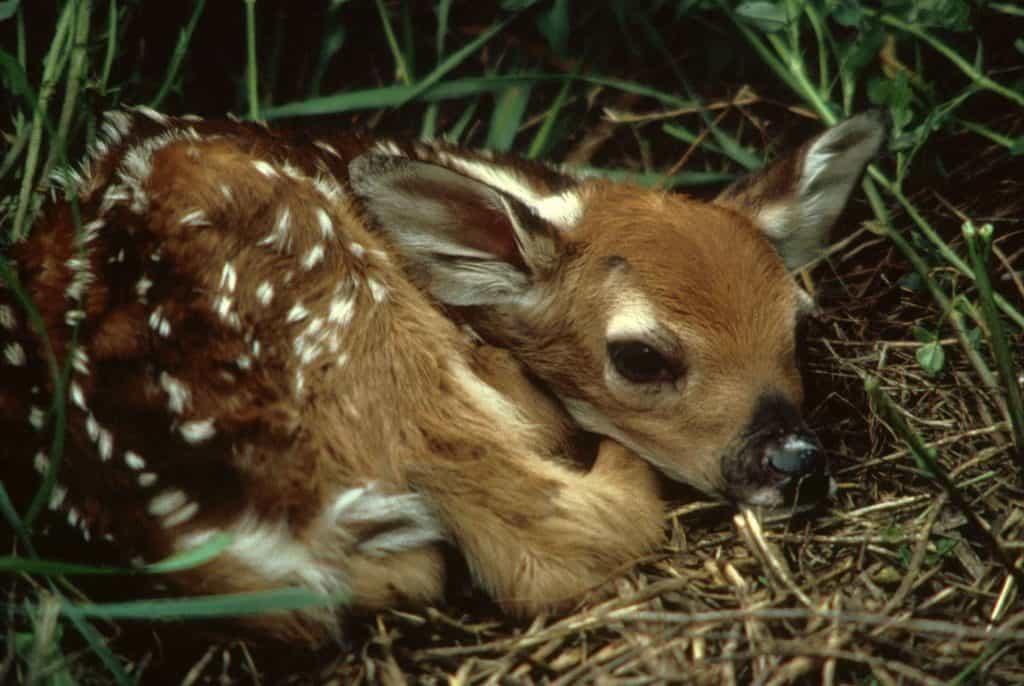
Through all of nature, no animal symbolizes gentle innocence quite like the deer. With their typically flighty nature, deer have spent most of history in hunters’ sights as a prized game. In particular, the whitetail deer has made a name for itself as the smallest yet most widespread deer species in the Americas. However, there’s more to them than what their docile reputation lets on. Take a closer look at this unique species with these whitetail deer facts.
- The whitetail deer can live up to 4.5 years in the wild and 14 years in captivity.
- An adult whitetail deer reaches a size of 6 to 7 feet long.
- Whitetail deer weigh from 110 to 300 lbs.
- The whitetail deer can leap as high as 10 feet.
- Whitetail deer can sprint at speeds of 30 miles per hour.
- The whitetail deer’s scientific name is Odocoileus virginianus.
- Deer first evolved 56 million years ago.
- All whitetail deer are herbivores.
- Deer belong to a subfamily of ungulates, or large mammals with hooves.
- Whitetail deer have around 38 subspecies.
- Young deer are vulnerable to bobcats, mountain lions, and coyotes in the wild.
- Like other deer species, the whitetail does not migrate.
- Around 30 million whitetail deer roam North America alone.
- Whitetail doe typically give birth to 3 fawn.
- Male whitetail deer often spar to establish social dominance.
- Texas has the most whitetail deer of any US State.
- The whitetail’s ears can rotate up to 180°.
- Whitetail deer are most active during the dawn, dusk, and nighttime.
- The whitetail deer represents 10 US states as its state animal.
- Whitetail deer reach sexual maturity as early as 6 months old.
Whitetail Deer Facts Infographics

Bambi may be the most popular whitetail deer.
You may know Bambi from the 1942 animated film, but this Disney feature was actually based on a book released nearly two decades earlier. Disney adapted most of the plot and the titular protagonist from Austrian author Felix Salten’s 1923 novel Bambi, A Life In The Woods.
Originally, the novel portrayed Bambi as a roe deer, a species native to Eurasia. Since it would be unlikely for Americans to recognize this species, Disney changed Bambi into a whitetail deer. It only makes sense, since whitetail deer are the most widely-distributed deer species in the world. Thus, Disney settled on using this species for the films.

Whitetail deer use their tails as a warning signal.
As their name suggests, whitetail deer have distinctly-colored tails that serve as a primary communication system for their kind. When faced with a threat, a whitetail deer would raise its tail, exposing its white underside. This behavior signals the other deer in its herd to either flee or retaliate.
Aside from this warning system, whitetails also communicate through leaving scents and making certain sounds or calls. All in all, they can leave scents from seven parts of its body. The whitetail’s scent glands are found in most of its face, between its toes, in its foreskin, and along its hind legs.
Baby deer lay down to hide themselves.
Learning how to walk may be one of Bambi’s most iconic scenes, but it’s also a realistic portrayal of how helpless fawns are. In the wild, doe would usually leave their fawns in tall grass or other crevices as they forage for food.
As the fawns await their mother’s return, they can only sit still and hope that their spotted coats would disguise them from nearby predators.

The whitetail deer has been observed eating human flesh.
Generally speaking, the whitetail deer eats large amounts of grass, legumes, fruits, and other crops. However, whitetail deer tend to stray from their plant-based diet in the winter.
As the temperature drops, the cold hinders the growth of vegetation and threatens their source of essential minerals. To survive, these deer would have to feed on fish, dead rabbits, or live birds.
More recently, scientists found the first documented case of a whitetail feeding on human remains. While observing a Texas body farm in 2017, researchers encountered a whitetail scavenging on the decomposing bodies.
Deer poop can tell you if a whitetail is nearby.
Regardless of species, deer normally poop in dark brown to black pellets around ½ to ⅝ inches in diameter. As with most animals, deer droppings can indicate a deer’s diet, habitat, and proximity to an area.
If you happen to live in America and encounter warm poop that fits the description, it’s very likely that a whitetail is nearby.
Whitetail deer have a unique digestive system.
One of the most unique parts of deer anatomy is their four-chambered stomachs. Much like other ruminants like cows and sheep, the whitetail deer has a specialized stomach that helps them absorb nutrients from their food.
The whitetail’s digestion process involves a fermentation stage. Upon its initial digestion, the deer will regurgitate its food into a substance called cud, only to consume it once again for its final digestion.
Deer eyes work better at night.
Of all their senses, a deer’s sense of smell is the strongest. Generally, deer have over 300 million olfactory receptors, which is much higher than the human average of 5 million.
However, deer also have bad eyesight in daylight. Like other nocturnal species, deer eyes have more rods than cones, which makes their vision sensitive to light. This also explains why deer remain more active during hours with little to no sunlight.
Whitetail deer typically travel in herds of 5 to 6 individuals.
Unlike the solitary moose, whitetail deer like to keep a close circle of friends. Typically, they travel in groups of the same sex. In these groups, male deer or bucks would usually spar to exhibit dominance in a group.
One in 65 female whitetail deer can grow antlers.
Usually, only male deer grow antlers. Growing as much as an inch per day, bucks primarily use these appendages to fight for mates. However, there have also been rare cases of doe growing antlers.
With little odds, a doe may have unusually high testosterone levels and end up sprouting a pair of herself. Like males, they replace their antlers each year.
You may confuse a mule deer for a whitetail.
At first glance, it may be easy to mix up a mule deer with a whitetail. With similar coats and sizes, you might not know what to look out for to tell the two apart. However, there are two major differences between the mule deer vs whitetail.
For one, the mule deer’s tail has a black-tip, while the whitetail does not. Another distinguishing factor is their antlers. Mule deer have antlers that fork or branch out from numerous points. Meanwhile, whitetail antlers only branch out from a singular beam.

Was this page helpful?
Our commitment to delivering trustworthy and engaging content is at the heart of what we do. Each fact on our site is contributed by real users like you, bringing a wealth of diverse insights and information. To ensure the highest standards of accuracy and reliability, our dedicated editors meticulously review each submission. This process guarantees that the facts we share are not only fascinating but also credible. Trust in our commitment to quality and authenticity as you explore and learn with us.
